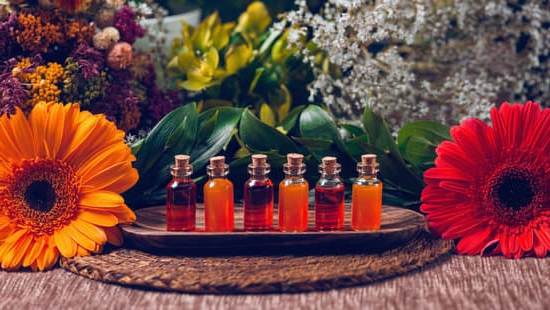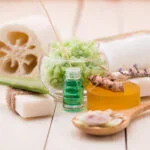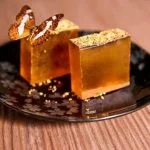Aromatherapy is a popular holistic healing practice that utilizes the therapeutic properties of essential oils to promote physical and emotional well-being. One common question that arises when delving into aromatherapy is whether it is better to use hot or cold methods for optimal results. The temperature at which essential oils are diffused or applied can significantly impact their effectiveness and benefits.
Essential oils, derived from plants, flowers, and herbs, contain potent aromatic compounds that can positively influence our health and mood. When inhaled or absorbed through the skin, these natural oils interact with the body’s chemistry to promote relaxation, reduce stress, alleviate pain, improve sleep quality, boost immunity, and more. Whether using hot or cold methods in aromatherapy can alter how these benefits manifest.
Hot aromatherapy involves using heat to release the volatile molecules of essential oils into the air, often through methods like steam diffusion or warming devices. The warmth helps to enhance the scent and therapeutic properties of the oils but may also lead to faster evaporation and potential degradation of certain compounds.
On the other hand, cold aromatherapy techniques such as room diffusers or applying oils directly onto the skin without heat preserve the integrity of the oils but may not disperse them as effectively into the air. The choice between hot and cold aromatherapy methods ultimately depends on personal preferences, desired outcomes, safety considerations, and specific essential oil recommendations for each method.
The Concept of Hot Aromatherapy
Aromatherapy is the practice of using essential oils to promote holistic health and well-being. The use of heat in aromatherapy can enhance the therapeutic benefits of essential oils by increasing their evaporation and dispersal into the air. When essential oils are heated, their molecules become more volatile, allowing them to be released more quickly and effectively. This can lead to a more potent aroma and stronger therapeutic effects.
One of the main benefits of hot aromatherapy is its ability to create a warm and inviting atmosphere that can help reduce stress and anxiety. Heating essential oils can also help alleviate respiratory issues, such as congestion or allergies, by clearing nasal passages and promoting easier breathing. Additionally, hot aromatherapy is often used for muscle relaxation and pain relief, making it popular among individuals seeking relief from physical tension or discomfort.
Despite its advantages, there are some drawbacks to using heat with essential oils in aromatherapy. High temperatures can potentially degrade the quality of certain essential oils, diminishing their therapeutic properties. It is important to use caution when heating essential oils to ensure that they are not exposed to excessive heat for extended periods. Furthermore, some individuals may prefer cooler methods of aromatherapy due to sensitivity to heat or personal preferences.
| Benefits | Drawbacks |
|---|---|
| Enhances evaporation and dispersal of essential oils | Potential degradation of oil quality with high temperatures |
| Promotes relaxation and stress reduction | Exposure to excessive heat may affect therapeutic properties |
| Helps with respiratory issues and muscle relaxation | Sensitivity to heat or personal preferences may limit usage |
The Concept of Cold Aromatherapy
Cold aromatherapy is particularly beneficial for individuals with sensitive skin or respiratory conditions, as heat can sometimes exacerbate these issues. Additionally, cold methods are often preferred by those who want a more subtle scent experience or who are concerned about the potential safety risks associated with using heat for aromatherapy. As such, cold diffusion methods like nebulizers or reed diffusers are popular choices for creating a gentle and continuous aroma in living spaces.
While cold aromatherapy has numerous advantages, there are some drawbacks to consider as well. For example, cold diffusion methods may not always provide as strong or immediate of an effect as hot methods like steam inhalation or warm compresses. Some individuals may also find that certain essential oils do not diffuse as effectively without heat. Therefore, it’s important for users to experiment with different techniques to determine which works best for their specific needs and desired outcomes.
| Advantages | Disadvantages |
|---|---|
| Preserves essential oil properties | May not provide immediate effects |
| Suitable for sensitive skin/respiratory conditions | Some oils may not diffuse effectively without heat |
| Gentle scent experience | Less intense compared to hot methods |
Aromatherapy Diffusers
One of the main considerations when comparing hot and cold diffusers is the impact on the efficacy of essential oils. Heat can alter the chemical composition of essential oils, potentially diminishing their therapeutic benefits. Cold diffusion methods are often preferred for this reason as they maintain the integrity of the oils.
However, some argue that heat can enhance the aroma of certain essential oils and promote relaxation through inhalation. Ultimately, the choice between hot and cold diffusers depends on individual preferences and desired outcomes.
Another factor to consider when choosing a diffuser is safety. Hot diffusers pose a higher risk of accidental burns or fire hazards compared to cold diffusers. It is important to follow manufacturer instructions carefully and use caution when handling hot devices.
Cold diffusers are generally considered safer options for households with children or pets due to their cool mist output. By weighing the pros and cons of hot and cold aromatherapy diffusers, individuals can make an informed decision based on their specific needs and priorities.
Safety Considerations
When it comes to aromatherapy, whether to use hot or cold methods is a common question that arises among users. Safety considerations play a crucial role in determining the best approach to take when using essential oils for therapeutic purposes. Understanding the potential risks and precautions associated with both heat and cold aromatherapy is essential to ensure a safe and effective experience.
To address the safety concerns when using heat for aromatherapy, it is important to note that exposure to high temperatures can alter the chemical composition of essential oils, affecting their therapeutic properties. Heating essential oils directly over an open flame or using excessively high temperatures in diffusers can lead to reduced effectiveness and even cause skin irritation or allergic reactions in some individuals.
Therefore, it is advisable to use gentle heat sources such as diffusers specifically designed for aromatherapy, which regulate temperature levels to prevent overheating.
On the other hand, cold aromatherapy also poses certain safety considerations that need to be taken into account. While cold methods like inhalation or topical application of undiluted essential oils are generally safe for most people, it is crucial to perform a patch test prior to use to check for any adverse reactions.
Additionally, prolonged exposure to cool temperatures through cold diffusers may not provide the desired therapeutic benefits as effectively as using warmth to disperse essential oils. It is important to strike a balance between enjoying the cooling effects of cold aromatherapy while ensuring that the oils remain potent and beneficial.
- Always store essential oils in a cool, dark place away from direct sunlight and heat sources.
- When using heat for aromatherapy, never heat essential oils directly over an open flame.
- Consult with a qualified healthcare practitioner before starting any new aromatherapy regimen if you have any underlying health conditions or concerns.
Personal Preferences
When it comes to aromatherapy, personal preferences play a significant role in determining whether hot or cold methods are more suitable. Some individuals may find the soothing warmth of hot aromatherapy comforting, especially during colder months or when looking to relax tense muscles. On the other hand, those who prefer a refreshing and invigorating experience might lean towards cold aromatherapy for its cooling effects that can help alleviate headaches or improve focus and concentration.
Considering Sensitivity and Skin Type
One factor to consider when choosing between hot or cold aromatherapy is an individual’s sensitivity and skin type. Hot methods such as steam inhalation or warm compresses
Climate and Seasonal Considerations
Another aspect that influences the choice between hot and cold aromatherapy is climate and seasonal changes. In warmer temperatures, individuals may prefer cold methods to help cool down, while in colder climates, hot aromatherapy can provide comfort and warmth. Adapting your aromatherapy routine based on the season can enhance its effectiveness and make it more enjoyable according to individual preferences.
At the end of the day, whether to use hot or cold aromatherapy ultimately depends on what
Recommended Essential Oils for Hot vs Cold Usage
When it comes to aromatherapy, the choice between using hot or cold methods can greatly impact the effectiveness and benefits of essential oils. Different essential oils have unique properties that may be better utilized with either heat or cold diffusion. Understanding which essential oils work best with hot or cold methods can help you make the most out of your aromatherapy experience.
Recommended Essential Oils for Hot Aromatherapy
Hot aromatherapy involves using heat to release the aromatic compounds in essential oils into the air. This method is ideal for promoting relaxation, easing muscle tension, and improving circulation. Essential oils such as lavender, peppermint, eucalyptus, and rosemary are recommended for hot aromatherapy due to their soothing and invigorating properties. These oils can help alleviate stress, headaches, congestion, and fatigue when diffused using a heat source like a candle or electric diffuser.
Recommended Essential Oils for Cold Aromatherapy
Cold aromatherapy involves using non-heat methods like nebulizing diffusers or reed diffusers to disperse essential oils into the air. This method preserves the therapeutic properties of essential oils without altering their chemical composition.
Essential oils such as citrus oils (lemon, orange), tea tree oil, chamomile, and frankincense are recommended for cold aromatherapy due to their uplifting, cleansing, and calming effects. These oils can enhance mood, purify the air, promote sleep quality, and support overall well-being when diffused without heat.
Experimenting with different essential oils and methods of diffusion is key to finding what works best for you in both hot and cold aromatherapy practices. Personal preferences play a significant role in determining whether you prefer the invigorating warmth of hot diffusion or the gentle coolness of cold diffusion. Consider your specific needs and desired outcomes when selecting essential oils for hot or cold usage to maximize the benefits of aromatherapy in your daily routine.
Conclusion
In conclusion, the debate between hot and cold aromatherapy ultimately comes down to personal preference and specific needs. Both methods have their own set of benefits and drawbacks, making it essential for individuals to consider what works best for them.
Hot aromatherapy, with methods such as steam inhalation or warm compresses, is often favored for its ability to quickly disperse essential oils and promote relaxation. On the other hand, cold aromatherapy, through methods like diffusers or cold compresses, is praised for maintaining the integrity of the oils and providing a refreshing experience.
When deciding whether to use hot or cold aromatherapy, it is crucial to take into account safety considerations. Heat can sometimes alter the properties of essential oils, while extreme cold temperatures can cause skin irritation. It is recommended to always dilute essential oils properly and perform a patch test before using any method. Additionally, considering individual sensitivities and health conditions is vital in ensuring a safe and effective aromatherapy experience.
Overall, there is no one-size-fits-all answer to whether hot or cold aromatherapy is better. Each method offers unique benefits that can cater to different situations and preferences.
Experimenting with both hot and cold techniques, understanding how each affects the efficacy of essential oils, and listening to your body’s response can help determine which approach works best for you. Whether you choose warmth for relaxation or coolness for invigoration, incorporating aromatherapy into your self-care routine can bring about numerous holistic benefits for your overall well-being.
Frequently Asked Questions
What Is the Best Way to Use Aromatherapy Oils?
The best way to use aromatherapy oils is through diffusion. This can be achieved with a diffuser, which disperses the oil particles into the air for inhalation. Another popular method is to mix the oils with a carrier oil for topical application, such as in massage or skincare.
Should You Use Hot or Cold Water for Essential Oils?
It is typically recommended to use essential oils with cold or room temperature water rather than hot water. Hot water can cause the essential oils to evaporate quickly and lose their therapeutic properties. Cold water helps to retain the potency of the oils for longer periods of time.
Does Heat Ruin Essential Oils?
Heat can potentially ruin essential oils if they are exposed to high temperatures for extended periods. This can cause the chemical composition of the oils to change, leading to a loss of their beneficial qualities. It is important to store essential oils in a cool, dark place away from direct heat sources to maintain their integrity and effectiveness.

Are you looking for a natural way to improve your health and wellbeing?
If so, aromatherapy may be the answer for you.





